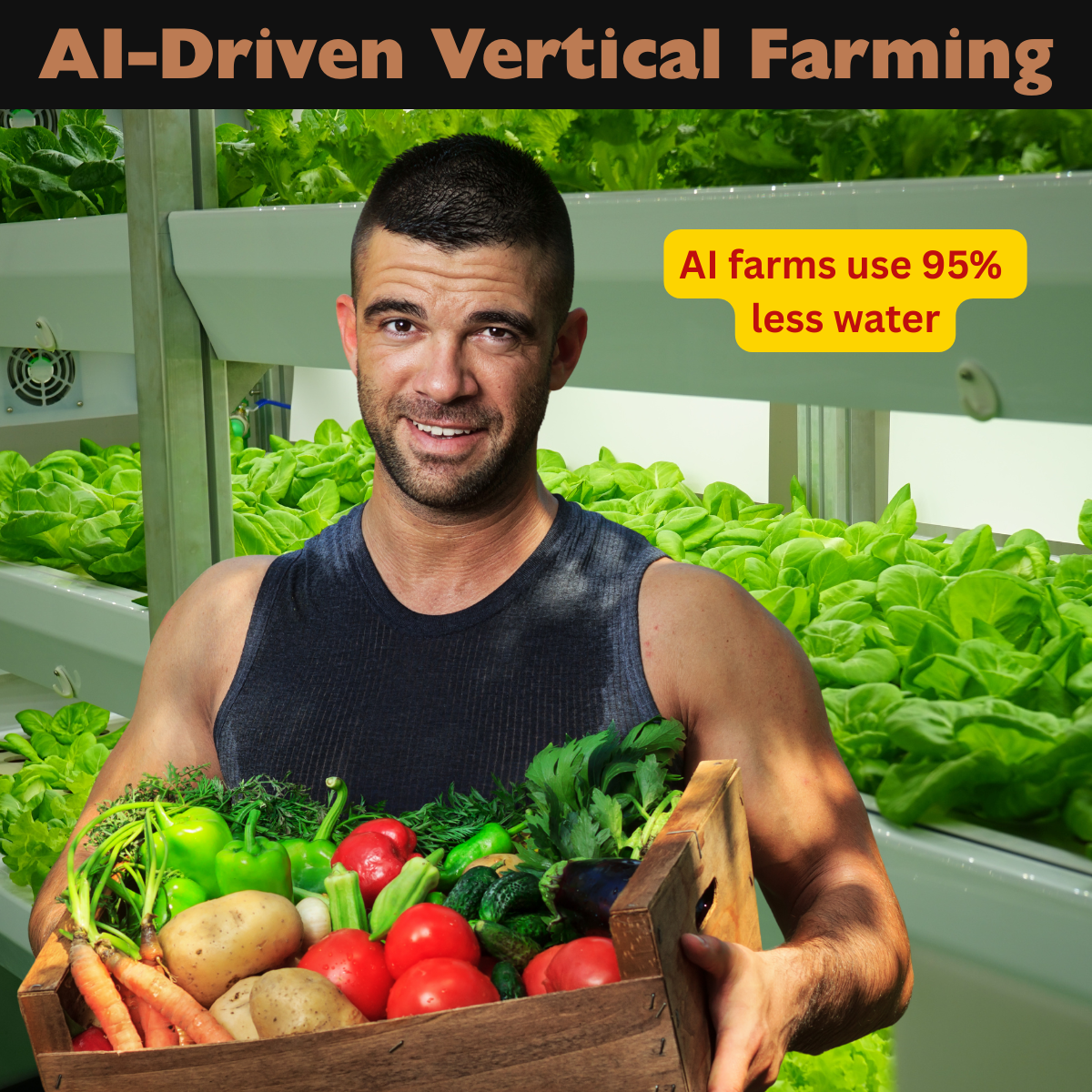Posted At: Aug 08, 2025 - 273 Views

Vertical Farming Automation: How AI Controls Light, Temperature, and Nutrients in Urban Farms
In a world where cities are expanding and arable land is shrinking, vertical farming has emerged as a promising solution to feed growing urban populations. But what makes vertical farms truly efficient, sustainable, and scalable isn’t just their towering architecture — it’s the AI-powered automation systems that run them.
Welcome to the future of agriculture, where artificial intelligence controls not only what we grow, but how we grow it — with precision, consistency, and minimal human input.
🌿 What is Vertical Farming?
Vertical farming involves growing crops in vertically stacked layers, often inside controlled indoor environments such as warehouses, containers, or high-rise buildings. This technique uses hydroponics, aeroponics, or aquaponics, and eliminates the need for soil, relying instead on nutrient-rich water and artificial lighting.
The key benefits include:
- Minimal land usage
- 90–95% less water than traditional farming
- Year-round production
- Proximity to urban markets (lower transport costs and emissions)
But these benefits depend heavily on precise environmental control — and that’s where AI comes in.
🤖 Enter AI: The Brain of the Smart Farm
In traditional greenhouses or farms, managing temperature, lighting, and irrigation is often manual or rule-based. But vertical farming requires constant monitoring and fine-tuned adjustments across multiple layers of crops, 24/7.
AI systems enable this by integrating:
- Sensors and IoT devices to gather real-time data
- Machine learning algorithms to analyze that data
- Automated control systems to act on insights
Together, they form an intelligent feedback loop that optimizes plant growth conditions dynamically.
🔆 AI-Controlled Lighting
Plants need the right light spectrum and intensity to perform photosynthesis — but different crops, and even different stages of growth, require different lighting conditions.
How AI Helps:
- Adaptive Lighting Schedules: AI adjusts LED lights based on plant type, time of day, and growth stage.
- Energy Optimization: Algorithms minimize power usage by fine-tuning intensity and duration.
- Spectral Customization: AI selects the optimal light wavelengths for specific crops (e.g., blue for leafy greens, red for fruiting plants).
This results in faster growth, better yields, and lower energy bills.
🌡️ Climate Control: Temperature & Humidity
Maintaining the right temperature and humidity levels is critical in enclosed farms — too much heat or moisture can invite disease or stunt growth.
How AI Helps:
- Real-time Monitoring: Sensors track environmental variables like temperature, humidity, CO₂ levels, and airflow.
- Predictive Adjustments: AI models predict environmental changes and preemptively adjust HVAC systems.
- Microclimate Zoning: Different crops on different racks can have tailored micro-environments thanks to AI orchestration.
These systems ensure stable growth conditions with minimal human intervention.
💧 Nutrient Delivery Automation
In hydroponic and aeroponic systems, crops get their nutrients from water solutions rather than soil. AI ensures this process is optimized to the milliliter.
How AI Helps:
- Nutrient Sensing: Real-time monitoring of pH, EC (electrical conductivity), and nutrient levels.
- Custom Blends: AI adjusts nutrient mix based on crop type, age, and performance.
- Waste Minimization: By automating delivery, AI reduces water and nutrient waste significantly.
The result? Healthier plants, fewer resources used, and more sustainable food production.
📈 Data-Driven Farming: AI Learns and Improves
One of AI’s biggest advantages is its ability to learn over time. As it collects data across crop cycles, it identifies patterns and continually improves decisions.
Benefits include:
- Yield prediction and optimization
- Early detection of disease or growth anomalies
- Tailored growing recipes per crop and region
- Scalability across multiple facilities
This transforms farming from a reactive to a proactive discipline.
🏙️ Vertical Farming in Urban Environments
AI-powered vertical farms can thrive in cities, converting underused spaces — rooftops, basements, shipping containers — into food production hubs. Combined with robotics and AI, these farms can be operated with minimal human oversight, making urban agriculture economically viable.
🌍 Toward a More Sustainable Food Future
AI automation in vertical farming is not just about convenience — it’s about resilience. As climate change disrupts traditional agriculture and global supply chains grow brittle, AI-driven farms offer:
- Local food security
- Lower carbon footprints
- Fewer pesticides and chemicals
- Resilient, year-round production
This is agriculture reimagined — vertically, intelligently, and sustainably
🧠 Final Thoughts
Vertical farming shows us that the future of food doesn't lie in expanding farmland — it lies in going up, and in getting smarter.
With AI as the invisible farmer, we’re able to fine-tune every aspect of plant growth in real time. The result is a new paradigm in agriculture: one that is urban, automated, and resilient.
As the world grows more populous and uncertain, these smart farms may not just be a solution — they could be a necessity.
